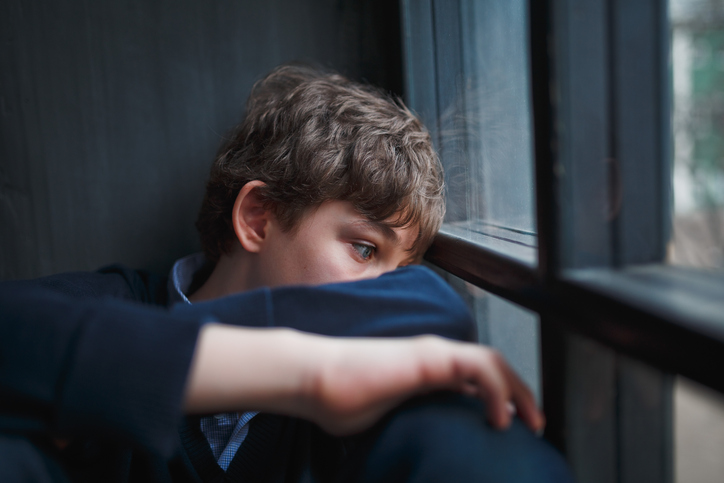More than half of adolescents misusing prescription drugs are doing so in isolation, increasing the risk of overdose deaths, according to a new study by the U.S. Centers for Disease Control and Prevention (CDC).
The CDC reviewed data from 15,963 self-assessments of 13- to 18-year-olds who were screened for drug abuse treatment during the period from 2014 to 2022. Among the multiple reasons for drug use cited by the teens, 73 percent reported using substances to relax, 40 percent to cope with anxiety and depression, and 50 percent reported using substances “to have fun or experiment.”
While the majority of the teens reported using alcohol and nonprescription drugs recreationally, 50 percent said they used such substances alone. Fifty-one percent of the teens misused prescription drugs in private; 19 percent reported misuse in the previous month. This solitary use contributed to the rise in overdose deaths among teens over the past decade.
‘Massive Overuse of Prescription Drugs’
Americans’ use of prescription drugs has reached record highs in recent years, with 6.3 billion prescriptions filled in 2020.
“Teens are immersed in a drug culture, including massive overuse of prescription drugs,” said Jane Orient, M.D., executive director of the Association of American Physicians and Surgeons.
Public schools also continue to miseducate, while providing places to buy and sell drugs, which is inexcusable, says Orient. “Children are not adequately taught about the perils of drugs, compared with constant tobacco education,” said Orient. “Yet tobacco generally takes decades to kill you and doesn’t harm your intellect.”
‘Mental Health Crisis’
The CDC study highlights a long-term trend, says Michelle Cretella, M.D., co-chair of the American College of Pediatrics Adolescent Sexuality Council. “The U.S. has been in a longstanding and now burgeoning mental health crisis among its youth. Drug abuse is an expected, prominent response.”
In 2020, the Substance Abuse and Mental Health Services Administration’s Hotline, a free referral and information service, received 833,598 calls, a 27 percent increase from 2019.
Years after the COVID-19 lockdowns kept Americans at home, at the expense of livelihoods, education, and community engagement, the toll on mental and emotional health is still accumulating.
‘Recipe for Disaster’
A 36-study review of the impact of the pandemic on pediatrics found “school closures and social lockdowns during the first COVID-19 wave were associated with adverse mental health symptoms…and health behaviors.”
Untreated mental health disorders lead to a much higher risk of drug abuse. Nearly 93 percent of households with children in school engaged in online learning during the pandemic, spending months less mobile, indoors, in front of screens.
“Coupled with the nihilistic, valueless environment traditional public schools offer, this was a recipe for disaster,” said Orient.
‘Treatment More Challenging’
Exacerbating the issue, treatment for substance abuse is costly and often inaccessible. One Health Affairs study found the average cost for in-patient care is $28,731, and there are no treatment facilities for teens in 10 states, requiring expensive travel for therapy.
While opioid use disorder has been effectively treated with methadone or buprenorphine, treating teens is more complicated.
“Young people have psychological comorbidities and may also have problems in their home environments that drive them to self-medicate with illicit drugs,” said Jeffrey Singer, M.D., a surgeon, and senior fellow at the Cato Institute. “This makes treatment more challenging. They often require psychotherapy, family counseling/therapy, family involvement, and sometimes, psychiatric pharmacotherapy, in addition to the approaches used for adults.”
For teens, “most treatment programs are overpriced and ineffective,” Orient said.
‘I Urge Families to Homeschool’
The number one cause of drug abuse has long been recognized as the breakdown of the traditional family. With teens spending an average of eight and a half hours of time on screens per day, human interaction is significantly impacted, even within homes, says Cretella.
“Digital devices—which are addictive in and of themselves—are a significant cause of the modern-day surge in anxiety, depression, ADHD, OCD, pornography addiction, and gender incongruence, especially among youth,” said Cretella.
A diverse surge in homeschooling may be an attempt to reclaim childhood. One study found homeschoolers not only use fewer substances but strongly disapprove of illicit drug use.
“Due to the ubiquitous teaching of Critical Race Theory and gender ideology in public schools, I urge families to homeschool,” said Cretella. “Available curricula are academically superior to and have more uplifting content than government-funded schools. Socialization through co-ops and sports is very doable and successful.”
Ashley Bateman (bateman.ae@googlemail.com) writes from Virginia.
For a related article, click here.
